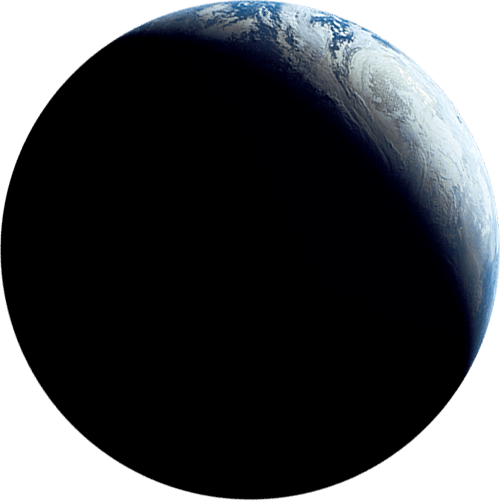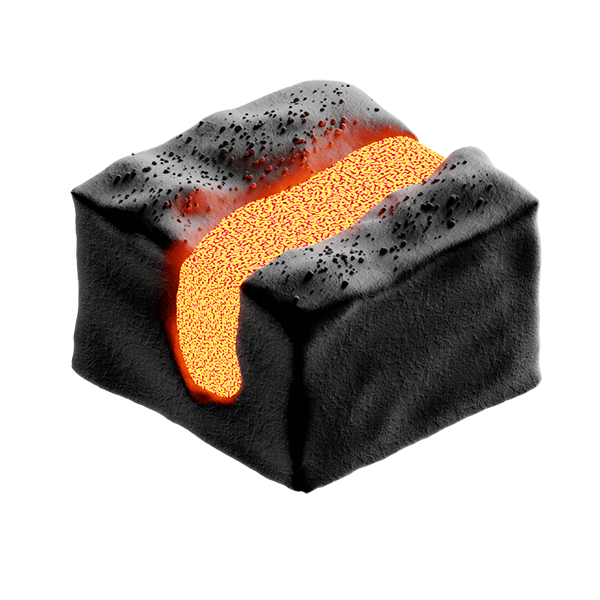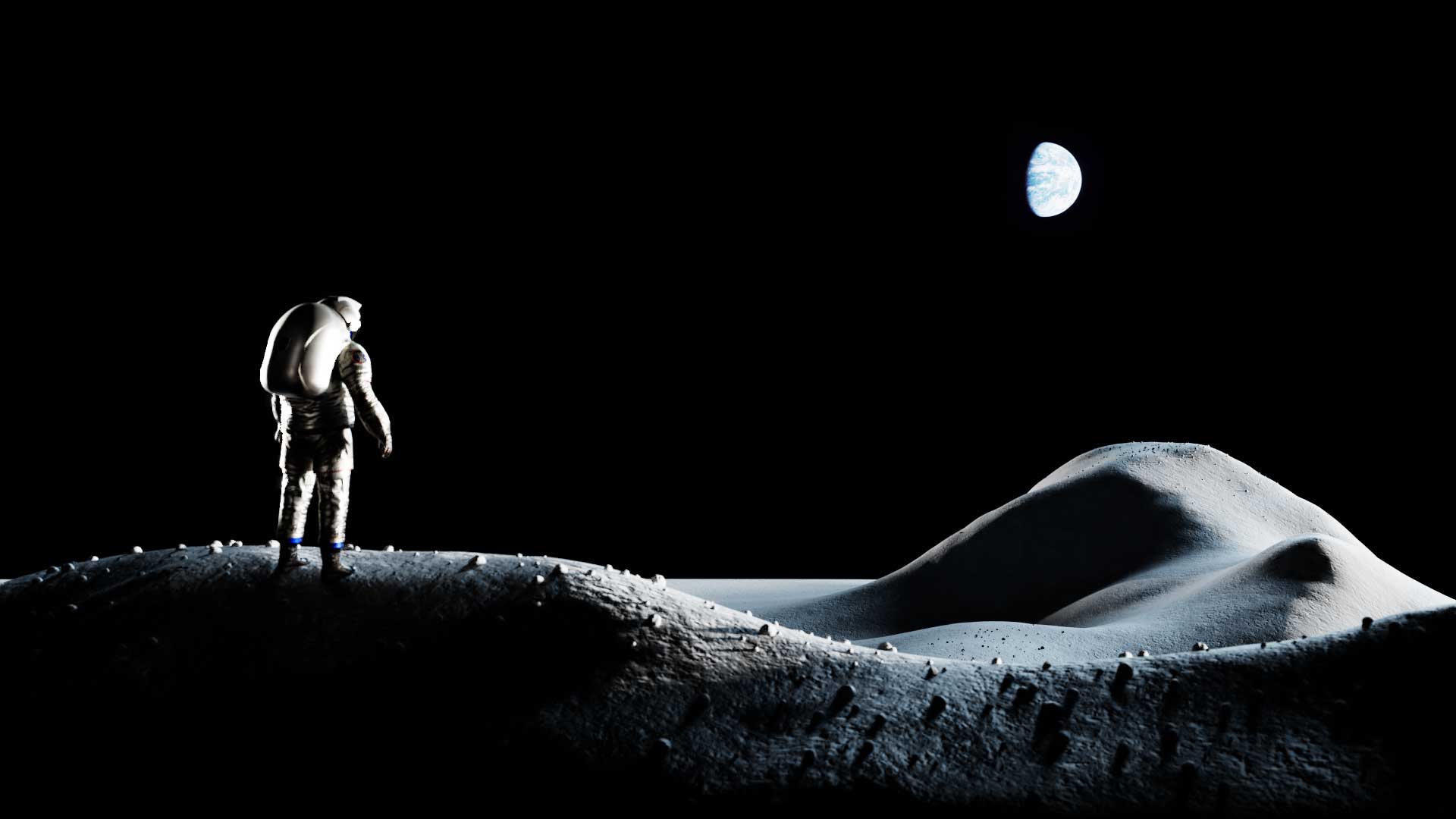
Often when we talk about living on other worlds, Mars tops the list of alternative options. But have we overlooked our neighbour the Moon? As the Moon is much closer to get to and offers valuable resources that we could mine and extract to send back to Earth, it’s a more viable option for a colony.
In-home experts at Hillarys have teamed up with Professor Lewis Dartnell, University of Westminster, to imagine what life might be like 150 years from now, if we colonised the Moon. Lewis Dartnell is an esteemed Professor, presenter, research scientist and author who has published four books, with his latest already becoming a Sunday Times bestseller.
As resources start to dry up on Earth, the need for us to look further afield for the things we use becomes less of a fantasy.
Living on other planets has long been a fascination of sci-fi films and novels, but as technology advances, it is fast becoming a potential reality. The human race has not put anyone on the Moon since 1972 and NASA, Elon Musk and China are all racing to get back there and take it to the next level.
The Moon is so close to the Earth we would be able to travel back to get more resources. We have proven it is possible to get to the Moon and the time may have come to take advantage of that giant leap.


The hardest obstacles to overcome on the Moon are the lack of atmosphere and inhospitable surface. Cosmic radiation, micrometeorites, lack of atmosphere and extreme temperatures mean that living on the Moon would be a huge challenge.
However, the Moon used to be volcanically active, meaning there are large numbers of lunar lava tubes present. These lava tubes formed naturally over time- as molten lava flowed, cooled and solidified on the outside while continuing to move in the centre.
If we made a home for ourselves in lunar lava tubes we would have to adapt to living completely underground.
Lunar lava tubes can be over a kilometre wide and tall enough to comfortably fit a multi-story building. This means they would be plenty big enough for us to start building cities inside. In order to make these tubes habitable, they would need to be sealed at both ends and pressurised to provide a breathable air for the inhabitants. Citizens of the moon could move around freely, without spacesuits.
In order to be able to leave the colony a space suit would be essential. Those leaving would exit the colony through an airlock and take a lift up through a natural skylight in the lava tube to the lunar surface.
Something which may feel familiar to some of the population will be the ‘lunarquakes’ which occur on the surface. This would provide a challenge to us in terms of buildings and being underground. Luckily, earthquake proofing buildings has come a long way and we would be able to apply that knowledge to all the buildings in our colony.
As we know this is a risk before we even get to the moon, we would be able to plan the city accordingly. Leaving enough space between buildings and creating safe zones for particularly bad ones.
We would have to get used to a complete change in diet, gravity, light, temperature and power sources. Living on the Moon would not be for the faint hearted.
Lava flows from volcanic eruptions and becomes channelled into streams.
The overflow of these streams often cools and solidifies while the rest of the lava continues running; this creates stacked layers of rock around the lava flow.
After a long period of time the lava begins to melt down into the ground, creating a taller tube shape which becomes narrower.
A solid crust forms overhead and encases the tube. The lava within the tube is now well insulated, meaning it can travel for long distances and create incredibly long lava tubes.
Once the eruption is over, the flows harden and these tubes often become caves.



Cosmic radiation, micrometeorites, lack of atmosphere and extreme temperatures are not only reasons why we would have to live underground, they would also be the biggest obstacles for those trying to carry out tasks on the surface of the Moon.
As exciting as living on the Moon may sound, it would mean a massive adjustment to the way we live. Members of the colony would be confined to a relatively small city space, with a small population. The inability to leave the colony without great preparation and risk, could cause colony members to feel claustrophobic meaning there may be opportunities for members of the colony to visit their families on Earth and vice versa.
Space X are pioneering space tourism with reusable launch systems, meaning there may opportunities for members of the colony to visit their families on Earth and vice versa.
The Moon’s day is a month, meaning that for 14 days it is bright daylight and then for the next 14 days it is pitch black. In order to stop everyone on the colony struggling with their sleeping patterns, the light would be regulated within the lava tube to replicate Earth’s day cycle.
The artificial sunlight tubes would provide different types of light throughout the day and help aid sleeping by mimicking sunrises and sunsets. There would even be the ‘golden hour’ in the evening for the more selfie conscious among the colony.

We would have the opportunity to build a city from scratch and we could draw on our experiences across the world to create a more harmonious living space. The colony would have a large park in the centre, for aesthetic and practical reasons. It would be a recreation ground for the citizens of the colony and the trees and plants would help produce oxygen for the citizens.
Buildings facing the large park would be arranged with shortest at the front, getting progressively taller towards the back, as the lighting tubes creating the artificial sunlight would run down the middle of the city. This feature would also enable as many people as possible to see the greenery.
There would be little to no transport on the Moon colony, because of the relatively small size of the city we would mostly travel around by walking. This would help to reduce the amount of energy we required and we could use electric pods of bicycles.


 SOURCES +
SOURCES +